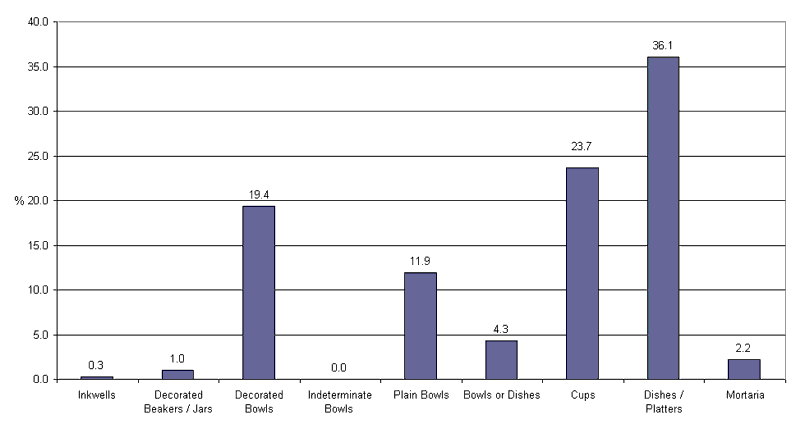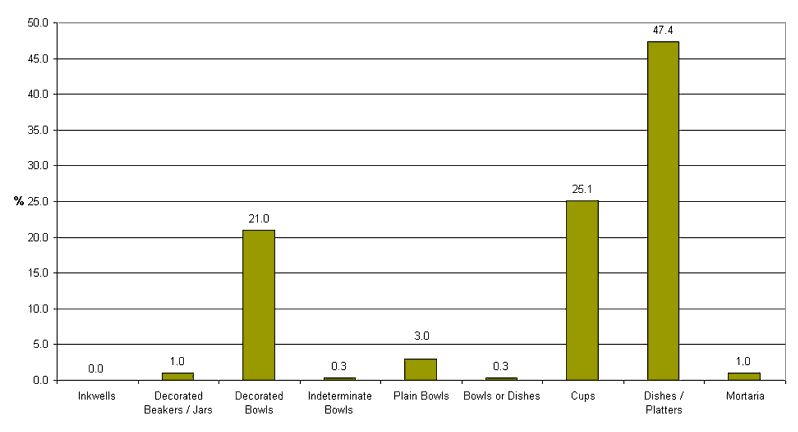
Chart 16: The Relative Frequency of Samian Form/Functional Categories at Smaller Civil Centres in Britain (Sample from 32 Dated Site Groups in Database).
Plain forms register comparatively strongly among the sample from smaller civil centres, including 'Small Towns', roadside settlements, etc. Chart 16 shows that decorated bowls form less than 20% of the sample, a total that is less than at any other type of site. Conversely, plain bowls form 12% of the sample, a figure higher than at any other type of site. Cups and dishes are the most common form types represented.
The database can be searched to select data relating to particular site types and years. Table 48, for instance, shows the relative frequency of samian types at smaller civil centres for the year AD 160 (note that types forming only minuscule proportions are omitted, as are (presumably) residual types such as, in this case, South Gaulish ware types; in this example CG items are vessels not identified more specifically in reports, in other words, they could be from Les Martres or Lezoux).
The chart showing the constitution of the sample from rural sites by form is again different from that for other types of site. Decorated bowls form around 20% of the sample. Remarkably, dishes and platters account for almost half the sample, a much higher proportion than at any other class of site (compare Charts 13, 14, 15, 16 and 17).

Chart 17: The Relative Frequency of Samian Form/Functional Categories at Rural Sites in Britain (Sample from 28 Dated Site Groups in Database).
The rural site at Birdlip Quarry, Gloucestershire, for example, produced a samian assemblage that is broadly consistent with this general pattern. It is stated in the report that, 'Samian pottery was common on the site although the range of forms was limited. Dishes and bowls accounted for 90% of the material ... The unimportance of cups reflects the low proportion of all pottery classified as "drinking vessels" (less than 5% of the total assemblage ...) and probably relates to the use of bowls for this purpose. ... It is probably also significant that there were only three examples of decorated vessels (form Drag. 37) and these were among the earliest datable vessels on the site' (Mudd et al. 1999, 235; cf. Timby 1999). A further factor with this particular site is the date of the main floruit of occupation, which is later 2nd and 3rd century. This has implications in terms of the currency of particular types of samian vessel: both samian cups and decorated bowls are generally less common by the later 2nd century.
Table 49 shows the composition of the samian from the rural site at The Old Sugar Beet Works, Felsted, Essex. The sample is mainly 2nd century and is of very modest size; nonetheless it shows a similar emphasis on plain samian, as does the general pattern shown by Chart 17.
© Internet Archaeology
URL: http://intarch.ac.uk/journal/issue17/1/8.2.5_6.html
Last updated: Mon Mar 7 2005